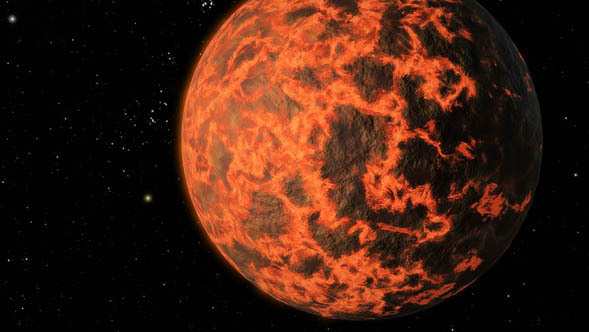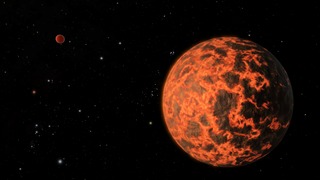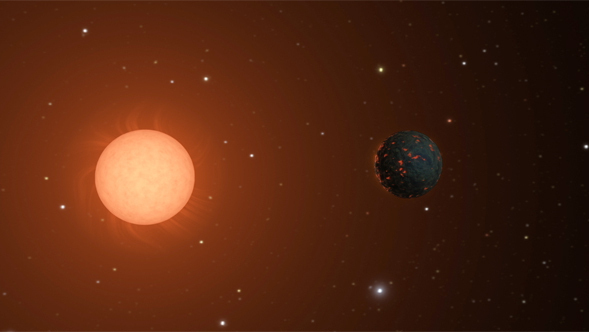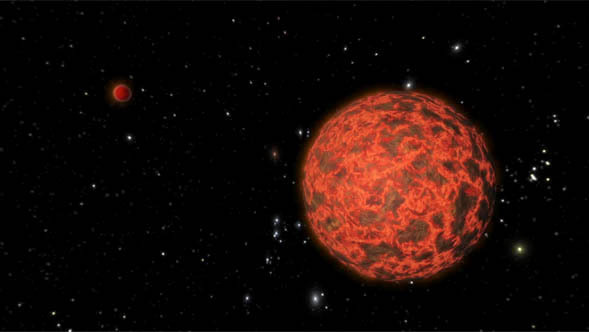
Credit: NASA/JPL-Caltech/R. Hurt (SSC)
Artwork • July 18th, 2012 • ssc2012-11a
ssc2012-11a
Astronomers using NASA's Spitzer Space Telescope have detected what they believe is an alien world just two-thirds the size of Earth - one of the smallest on record. The exoplanet candidate, known as UCF-1.01, orbits a star called GJ 436, which is located a mere 33 light-years away. UCF-1.01 might be the nearest world to our solar system that is smaller than our home planet.
Although probably rocky in composition like Earth, UCF-1.01 would be a terrible place for life. The world orbits scorchingly close to its star, so in all likelihood this planet lacks an atmosphere and might even have a molten surface, as shown in this artist's impression.
Evidence for UCF-1.01 turned up when astronomers were studying a known, Neptune-sized exoplanet, called GJ 436b, seen in the background in this image. The identification of nearby small planets may lead to their characterization using future instruments. In this way, worlds like UCF-1.01 might serve as stepping stones to one day finding a habitable, Earth-like exoplanet.
Because of GJ 436's proximity to our solar system, the star field around it shares many of our culture's famous cosmic landmarks. To the far left, the constellation of Orion gleams, though in a distorted shape compared to our vantage point on Earth. The red giant Betelgeuse (Orion's right shoulder) and blue Rigel (Orion's left foot) stand out, as well as the three belt stars. From GJ 436's perspective, however, the stars do not align as they do in our sky. The Pleiades star cluster is located to the upper left of UCF-1.01.
About the Object
- Name
- UCF-1.01 • GJ 436b
- Type
- Planet > Type > Terrestrial
- Planet > Special Cases > Transiting
- Distance
- 33 Light Years







